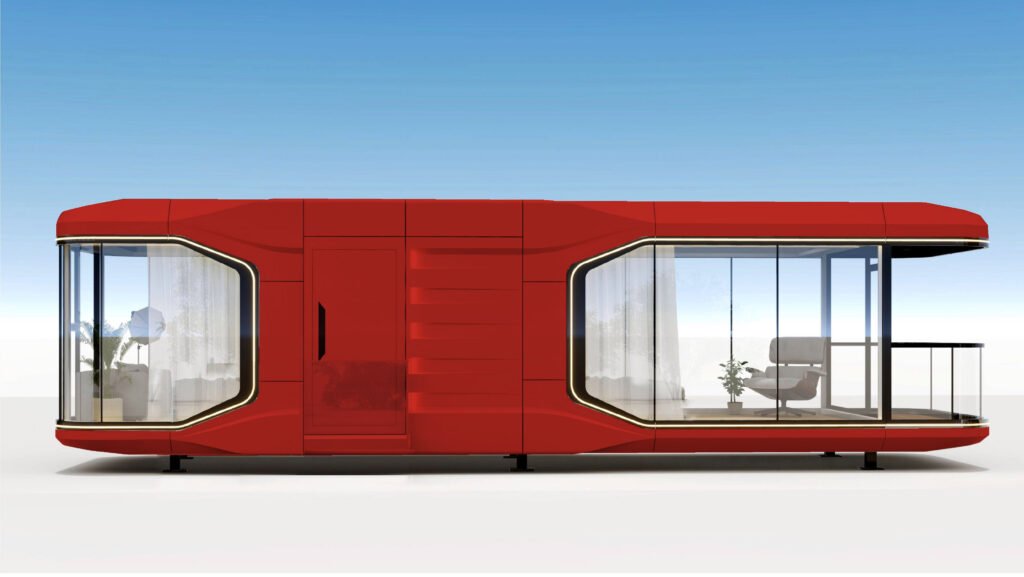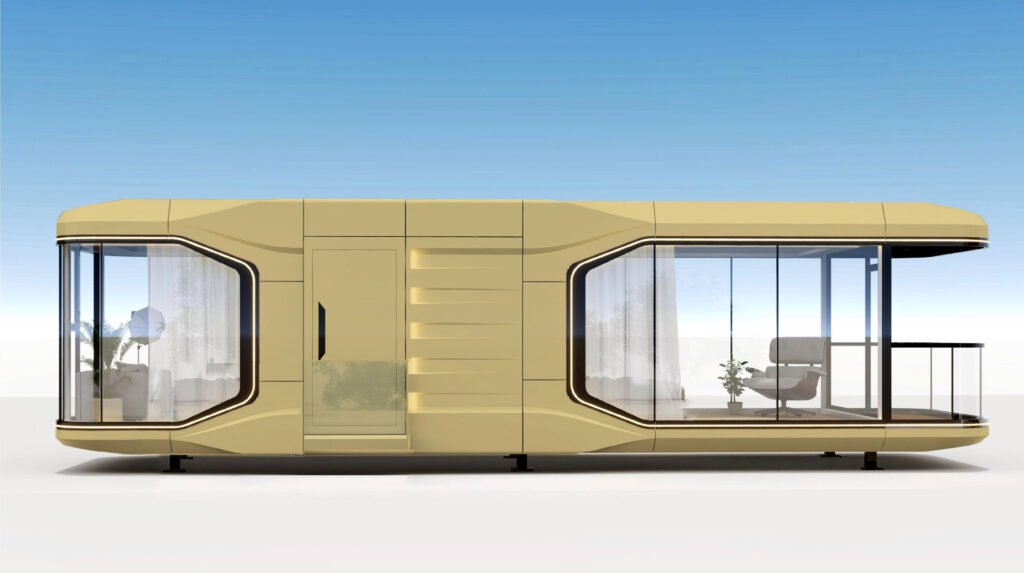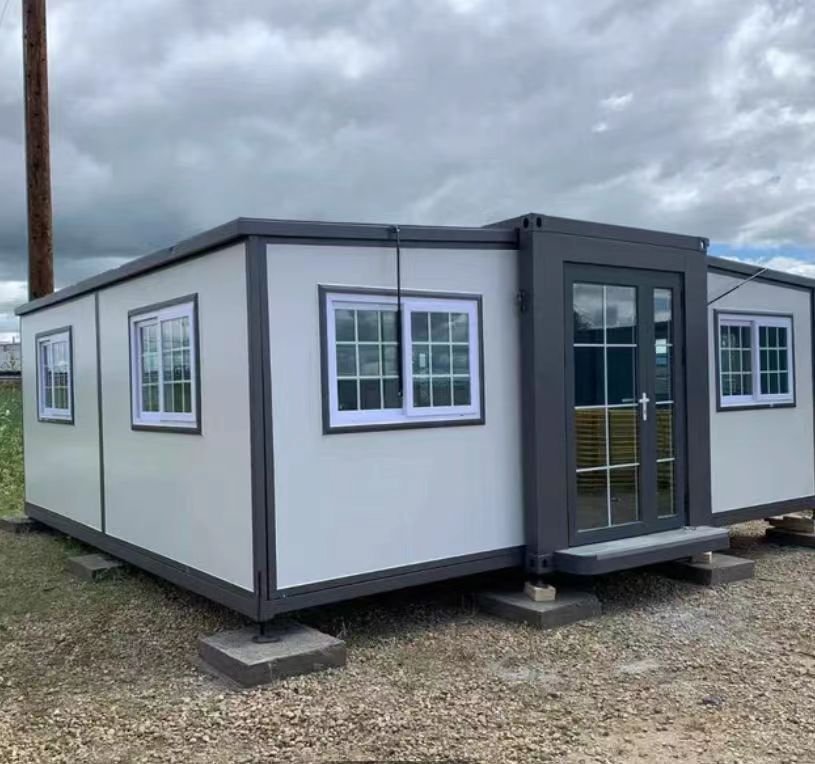
You’ve probably seen images of them online – sleek, industrial-style homes, made from repurposed shipping containers. They’re the latest thing. They look modern. They cost less than regular houses. They can be delivered almost anywhere. Then, the doubts start to creep in. Are they really safe to live in? Will I be living in a metal box that rusts, overheats or collapses during a storm? And just how affordable are they when you factor in all the extras? These are legit concerns that deserve straightforward answers. As the global housing market transitions to faster, smarter and more affordable construction methods, people are beginning to discover that container homes are a ‘thing.’ However, like any building method, their safety and affordability will depend on how well they’re designed, built and maintained. Let’s break it down.

Are Container Homes Safe and Affordable?
The case for container homes as a safe, durable and cost-effective housing option is strong. Structurally speaking, once they’re converted for residential use, container homes are made from steel structures engineered to withstand the high seas—they’re designed to stack, support tons of cargo, and survive extreme storms.
Financially, they can be much less expensive than traditional homes. This is primarily because they can be built faster, using fewer materials and fewer workers—that is, if you stick with the standard box-like design.
But, there are still some variables to consider:
- Complexity of the design
- Quality of materials used
- Adherence to local building codes and regulations
- Site preparation and utility access
- Who’s doing the work—DIY or experienced contractors
If you do your homework and use a container home the right way, you can have a safe, durable, and affordable home. This makes them an attractive option for governments, builders, and developers looking to build low-cost housing or temporary shelters.
What Makes Container Homes Safe and Affordable?Let’s Dive In.
🔒 Safety Considerations
1. Structural Integrity
The beauty of a shipping container lies in its simplicity and strength. Containers are made of corrugated weathering steel, designed to carry more than 30 tons of cargo and endure harsh environments.
✅ When you cut into a container (for windows, doors, or layout changes), it's essential to reinforce the structure with steel frames to maintain stability.
✅ Cold-formed galvanized steel profiles and galvanized color-coated panels help prevent rust and extend the life of the unit, especially in humid climates.
With basic inspections and rust control, container homes can easily last 20 years or more.
2. Fire Safety
Like any home, fire risk is real—but manageable.
🔥 Use non-combustible insulation materials, such as mineral wool or rock wool, rather than flammable options like spray foam.
🔥 Equip the home with smoke detectors, fire extinguishers, and clear emergency escape routes.
When properly designed, container homes can offer equal or even greater fire safety compared to wood-framed houses.
3. Ventilation & Indoor Air Quality
Steel is airtight—great for strength, bad for airflow. Poor ventilation can lead to mold, mildew, and trapped pollutants.
🌬️ Solution? Install mechanical ventilation systems and moisture barriers to maintain a healthy, breathable interior environment.
4. Pest Control & Moisture
Contrary to popular belief, container homes don’t attract pests—unless moisture builds up around the foundation or inside poorly sealed sections.
✅ Keep the structure elevated
✅ Clear debris regularly
✅ Seal all openings properly
A dry container is a pest-free container.
5. Security
The steel walls of a container home are harder to break into than most wooden homes. But just in case:
🔐 Add heavy-duty locks, security cameras, and motion sensors.
🔐 Consider installing anti-theft window bars or reinforced glass.
For remote sites or off-grid locations, these features make container homes not just safe—but nearly impenetrable.
💰 Affordability Factors
Container homes can cost between $1,000 and $30,000, depending on size, materials, and customizations. Luxury builds can even reach $400,000—but that’s still cheaper than most brick-and-mortar homes.
Cost Breakdown:
| Home Type | Approximate Cost |
|---|---|
| Basic 20ft container home (folding and Lego) | $1,000 – $2,000 |
| 40ft container home | $4,000 – $15,000 |
| Multi-container home (2–4 units) | $8,000 – $25,000 |
| High-end space capsule house | $15,000 – $35,000+ |
New vs. used containers: New ones cost more, but eliminate risks from toxic paint or old flooring.
Level of customization: Basic models are cheap, but adding solar panels, high-end finishes, or smart systems increases the cost.
Site preparation: Remote sites with no existing utility lines will need more investment.
Local permitting and codes: Can increase the timeline and budget.
Pro tip: Choosing a reputable factory that offers pre-finished, insulated, and fully wired units (like folding container houses) can save significant time and labor costs.
Addressing Your Key Concerns
🛑 What Are the Main Safety Concerns When Living in a Container House?
- Poor ventilation
- Inadequate insulation
- Rust and corrosion
- Lack of structural reinforcement after modifications
- Toxic materials in second-hand containers
Solution: Always purchase from certified manufacturers using new containers or fully decontaminated second-hand ones, and make sure your build complies with local safety codes.
🔧 How Does Material Quality Impact Durability?
Low-grade steel or subpar insulation may cut costs short-term but lead to long-term headaches.
✔ Use galvanized, rust-resistant steel
✔ Apply weatherproof coatings every 5–10 years
✔ Choose insulation with both thermal and fire ratings
Better materials = lower maintenance + longer lifespan.
🏗️ What Are the Best Practices for Maintaining Structural Integrity?
- Schedule semi-annual inspections
- Check for rust spots, foundation movement, and moisture intrusion
- Lubricate hinges and locks
- Reapply paint or sealants as needed
Think of it as an oil change for your home—routine, low-cost maintenance that prevents big repairs.
🔥 How Do Container Houses Compare to Traditional Homes in Terms of Fire Safety?
Container homes can actually outperform traditional homes if built correctly:
- Steel walls do not ignite
- Non-combustible insulation enhances safety
- Smaller square footage is easier to evacuate
Just make sure to install proper alarms and fire safety gear, just like you would in any home.
🛡️ What Are Some Effective Access Control Measures for Securing a Container House?
- Digital locks or heavy-duty padlocks
- Outdoor security cameras with motion detection
- Steel bars for windows
- Smart security systems with mobile alerts
Bonus: In remote areas, a container home is more secure by default due to its steel shell and few entry points.
Should You Live in a Container House?
In today’s world, affordability and safety are no longer optional—they’re essential. Container homes, when thoughtfully built and maintained, offer an outstanding balance of both.
✅ Safe: Structurally strong, fire-resistant, pest-proof, and secure.
✅ Affordable: Lower construction costs, quicker installation, and minimal maintenance.
✅ Flexible: Scalable for families, mobile for workers, and smart for developers.
Whether you're building an eco-village, a temporary shelter project, or your own dream home on a budget, a container house might just be the smartest structure you’ve never seriously considered—until now.
Ready to live in steel? Just make sure it’s certified, sealed, and smartly built—and you’ll be amazed at what this box can become. 🏠🛠️💡




